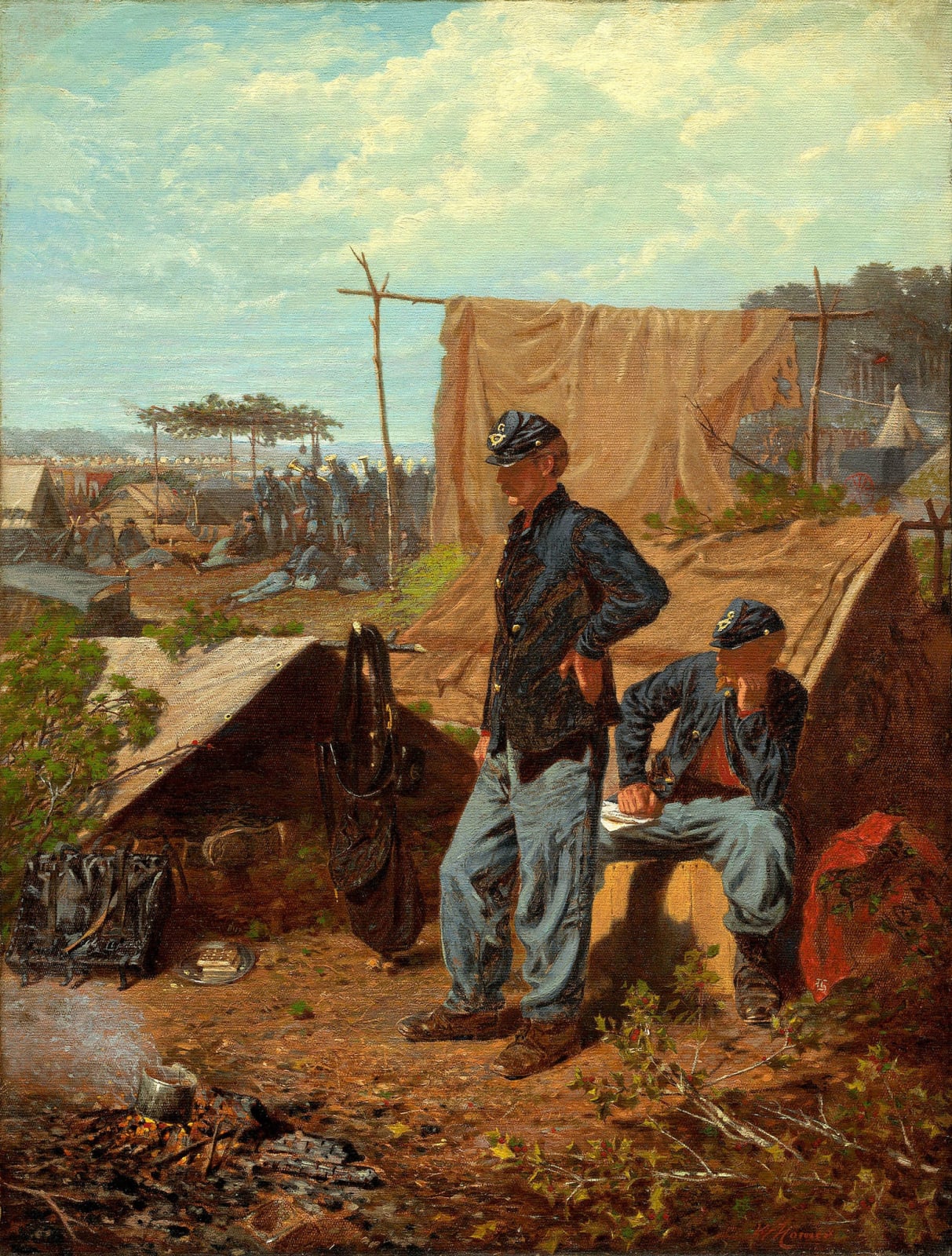This year Memorial Day was celebrated quietly, without much fanfare and without parades. When we looked at some of the paintings of soldiers in our gallery, we could see the poignancy with which they are often remembered in art; remembered in works that last far longer than a parade.
Many artists have, themselves, served in the military, others have just observed. Either way, they have been inspired to record their feelings and observations with works of art.
Thomas Hart Benton – Morning Train (A Soldier’s Farewell
Regionalist painter, Thomas Hart Benton was the son of Colonel Maecenas Eason Benton, who served in the Confederate Army during the Civil War and subsequently served four terms in Congress.
Hoping his son would follow in his footsteps, Benton was sent to military school, but his passion for painting was stronger than his desire to become a politician.
He served in the Navy during World War l, and was stationed in Norfolk, Virginia.
Benton was given the job of making drawings of military life and drawing the camouflaged ships, that entered Norfolk harbor, for identification purposes.
Benton said that the work he did during his military service was extremely helpful to him as an artist. Morning Train/A Soldier’s Farewell, was created when Benton was about fifty-four years old. Like many of his work, A Soldier’s Farewell is a glimpse into the life of rural Americans, often melancholy and touching.
Winslow Homer – Rush’s Lancers
It was a time when photography was young and the technology for printing photos was limited, but newspapers and magazines were able to produce engraved images on a mass scale. Homer’s paintings and drawings gave the public insight into the difficult and often heartbreaking times that the soldiers endured, not just in battle, but even at rest, a long way from home and family.
The Civil War was the first to have widespread representation in newspapers and magazines. Homer was one of the best, and most prolific, correspondents. His empathy toward the young soldiers who served in the war is apparent in his works. Homer had to endure the dangerous and exhausting conditions along with the troops.
Homer spent much of his later life painting, alone, in his studio overlooking the ocean, in Prouts Neck, Maine and becoming one of America’s finest and most beloved artists.
Stephen Scott Young – American Flag
Stephen Scott Young is one of America’s finest watercolor artists. He spent several years, in the 1990s, in Greenville, South Carolina, painting subjects related war and the military . Those works were ultimately displayed at the Greenville County Museum of Art, in an exhibition called Stephen Scott Young: Veterans.
Young not only painted recognizable icons, but also citizens of Greenville who were often overlooked.
Remembering Our Soldiers at Surovek Gallery
Please contact us if you would like more information about Morning Train/A Soldier’s Farewell, Rush’s Lancers, American Flag or any of the other fine art works available at Surovek Gallery.








